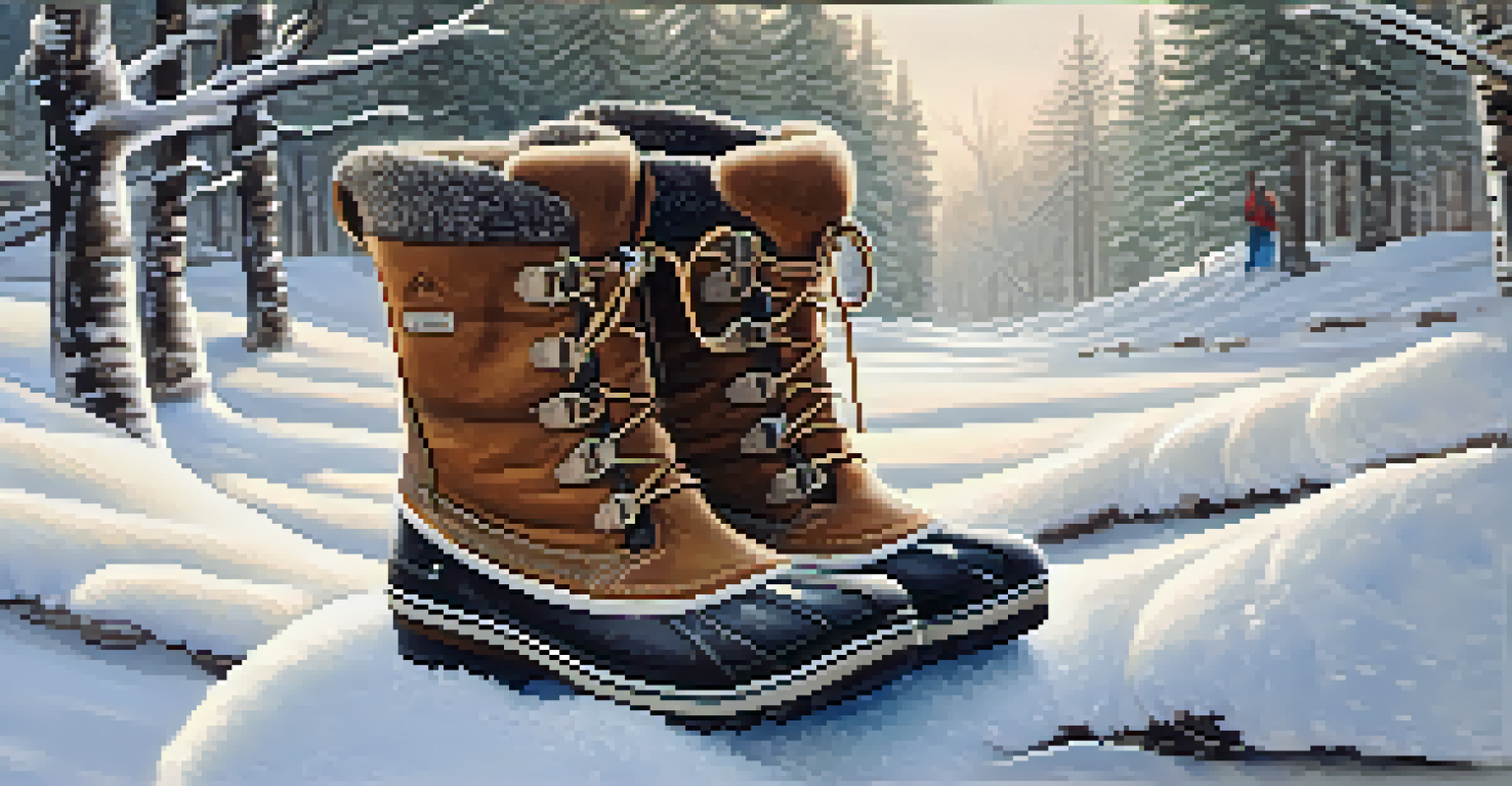Essential Gear for Winter Travel: Stay Warm and Safe

Choosing the Right Winter Clothing for Your Adventure
When it comes to winter travel, the right clothing can make all the difference. Layering is key; you want a moisture-wicking base layer to keep sweat away from your skin, an insulating mid-layer for warmth, and a waterproof outer layer to shield against the elements. Think of it like building a cozy sandwich—each layer serves a purpose to keep you comfortable.
There’s no such thing as bad weather, only inappropriate clothing.
Don’t forget about accessories! A warm hat, gloves, and a scarf are essential for protecting your extremities from the cold. These items might seem small, but they can significantly affect your overall comfort. Plus, they can add a stylish touch to your winter outfit, so you can look good while staying warm.
Lastly, make sure your footwear is up to the task. Waterproof boots with good insulation and traction are crucial, especially if you’ll be walking on icy surfaces. Consider investing in thermal socks too, as they provide extra warmth and prevent your feet from getting cold and damp.
Essential Gear: The Importance of Quality Outerwear
High-quality outerwear is your first line of defense against harsh winter conditions. Look for jackets and pants that are not only warm but also made from breathable materials. This ensures that you stay warm without overheating, which can lead to discomfort during your travels.

Investing in a good winter coat can save you a lot of hassle. Opt for features like adjustable hoods, cuffs, and hemlines, as they help keep cold air out. A well-fitted jacket not only keeps you warmer but also allows for better mobility, so you can enjoy your winter activities without restriction.
Layer Up for Winter Comfort
Proper layering with moisture-wicking, insulating, and waterproof clothing is essential for staying comfortable during winter adventures.
Furthermore, consider the weight of your outerwear. Heavier doesn’t always mean warmer, and you want something that’s easy to pack if you’re traveling. Look for lightweight options that still offer thermal protection—this balance is essential for a comfortable winter trip.
Staying Warm: The Role of Insulated Accessories
Insulated accessories are often overlooked, yet they play a crucial role in keeping you warm. Items like thermal gloves, beanies, and neck gaiters can trap heat and prevent cold air from sneaking in. This is particularly important because a significant amount of body heat escapes through your head and hands.
In the end, it's not the years in your life that count. It's the life in your years.
When choosing accessories, look for materials such as fleece or down, which provide excellent insulation. These materials not only keep you warm but are also lightweight, making them easy to carry in your bag. Plus, the right accessories can add a pop of color and personality to your winter wardrobe.
Don’t underestimate the power of thermal socks either. A good pair can keep your feet toasty, allowing you to enjoy outdoor activities for longer. Remember, staying warm from head to toe is essential for a pleasant winter travel experience.
Footwear Matters: Selecting the Perfect Winter Boots
Choosing the right winter boots is a game-changer for your travel comfort. Look for boots that are waterproof and insulated to keep your feet dry and warm, especially if you'll be walking through snow or slush. A solid tread is equally important to provide traction on icy surfaces, reducing the risk of slips and falls.
Think about the height of the boot too. A taller boot can help prevent snow from getting inside, while mid-height options are often more versatile for various winter activities. Whatever you choose, make sure they fit well and have enough room for thick socks without pinching your toes.
Invest in Quality Outerwear
High-quality outerwear that is breathable and well-fitted helps maintain warmth and mobility in harsh winter conditions.
Lastly, break in your boots before your trip. Wearing them around the house will help avoid blisters and discomfort while you’re out exploring. After all, the last thing you want is to cut your adventure short due to sore feet!
Essential Gear for Safety: What to Pack for Emergencies
While enjoying your winter adventure, it’s wise to be prepared for emergencies. Packing a small survival kit can be a lifesaver. Include items like a flashlight, a whistle, a multi-tool, and a first-aid kit to ensure you're ready for any unforeseen circumstances.
Consider bringing a portable phone charger, especially if you’ll be in remote areas. Cold weather can drain your phone's battery faster than usual, and having a backup charger can keep you connected in case of emergencies. It’s a small item that can make a big difference when you need help.
Lastly, familiarize yourself with the area you’re traveling to. Research local emergency numbers and have a plan in place. Knowing where to find help and having the right gear can provide peace of mind, allowing you to fully enjoy your winter getaway.
Hydration: Staying Hydrated in Cold Weather
It's easy to forget about hydration when it’s cold outside, but staying hydrated is just as important in winter as in summer. Cold, dry air can dehydrate you quickly, especially if you're engaged in physical activities like skiing or hiking. Carry a reusable water bottle to remind yourself to drink regularly.
Consider insulated water bottles that keep your drink from freezing. This ensures that you have access to refreshing water without worrying about icy sips. If you prefer warm beverages, a thermos for hot drinks can also be a great addition to your gear.
Stay Prepared for Emergencies
Packing a survival kit and being familiar with local emergency resources can enhance safety while enjoying winter activities.
Remember, your body needs water to function efficiently, even in the cold. Staying hydrated helps maintain your energy levels and keeps your skin from drying out, making your winter travel experience much more enjoyable.
Navigating the Outdoors: Essential Tools for Winter Activities
If you plan on engaging in winter sports or outdoor activities, having the right tools is essential. Ski poles, snowshoes, or ice cleats can enhance your experience and safety while navigating snowy terrains. These tools provide stability and help you maintain your balance on slippery surfaces.
Additionally, a good pair of goggles or sunglasses is vital for protecting your eyes from the glaring sun reflecting off the snow. The right eyewear can prevent snow blindness and keep your vision clear, allowing you to enjoy the beautiful winter landscape.

Lastly, don’t forget about a reliable map or GPS device if you’re venturing into less familiar areas. Being prepared with navigation tools ensures you stay on track and can find your way back safely after a day of adventure.